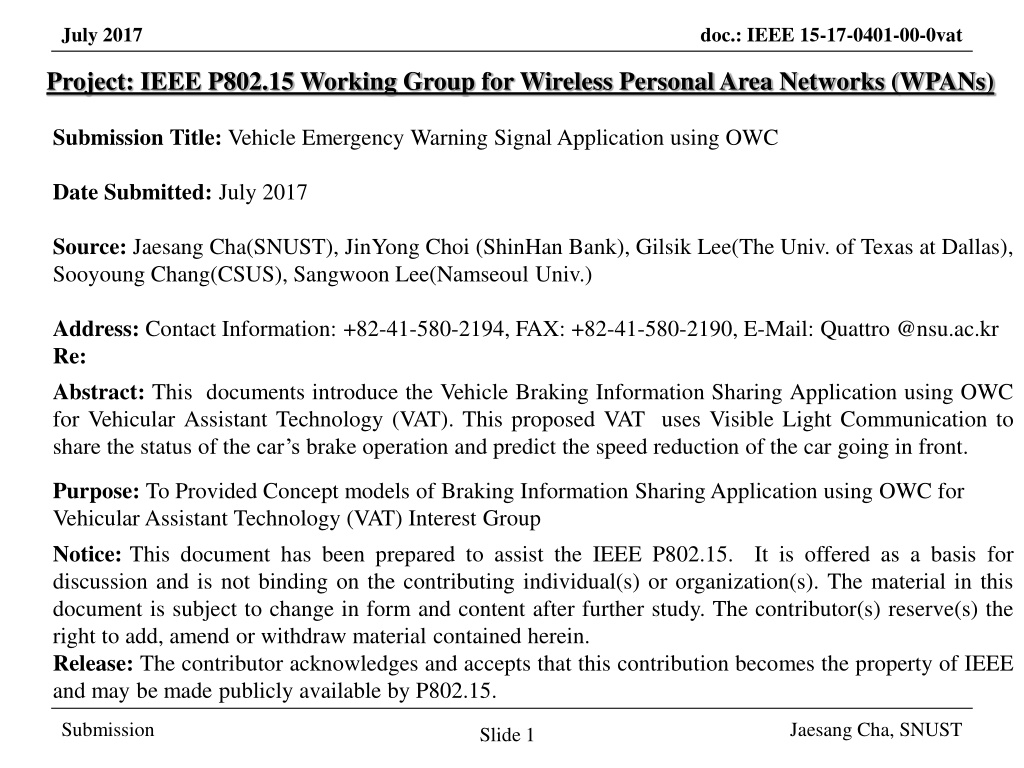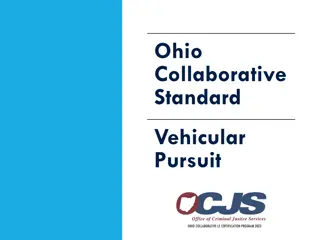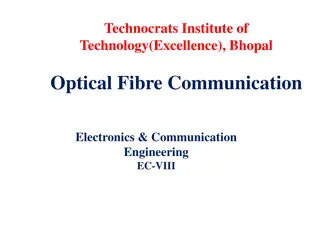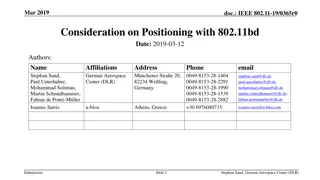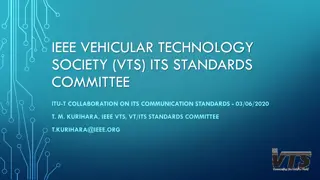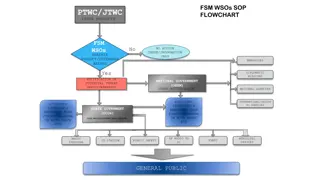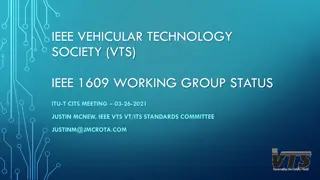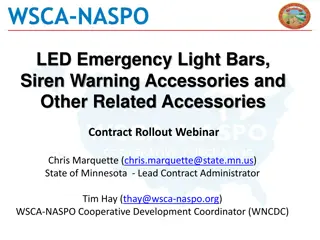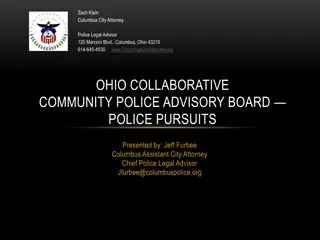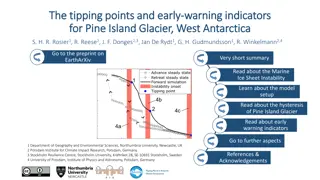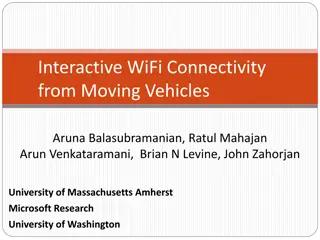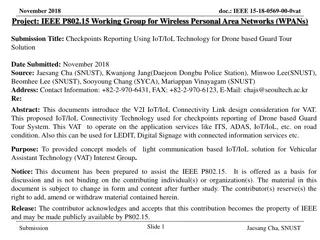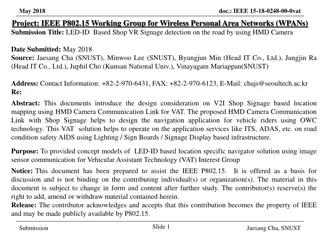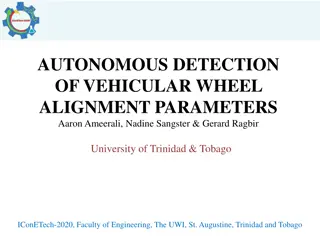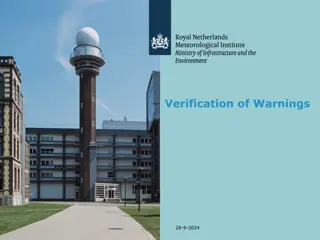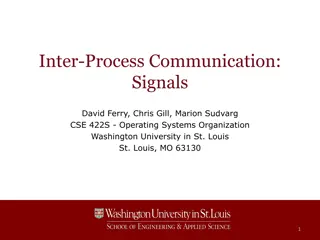Vehicle Emergency Warning Signal Application Using OWC for Vehicular Assistant Technology
Introducing a concept model for a Vehicular Assistant Technology application that utilizes Visible Light Communication to share braking information among vehicles. This proposed system aims to enhance safety by predicting and sharing brake operation statuses. The application is designed to prevent collisions and provide real-time driving assistance, particularly beneficial for autonomous driving cars.
- Vehicle Safety
- OWC Application
- Vehicular Assistant Technology
- Collision Prevention
- Autonomous Driving
Download Presentation

Please find below an Image/Link to download the presentation.
The content on the website is provided AS IS for your information and personal use only. It may not be sold, licensed, or shared on other websites without obtaining consent from the author. Download presentation by click this link. If you encounter any issues during the download, it is possible that the publisher has removed the file from their server.
E N D
Presentation Transcript
July 2017 doc.: IEEE 15-17-0401-00-0vat Project: IEEE P802.15 Working Group for Wireless Personal Area Networks (WPANs) Submission Title: Vehicle Emergency Warning Signal Application using OWC Date Submitted: July 2017 Source: Jaesang Cha(SNUST), JinYong Choi (ShinHan Bank), Gilsik Lee(The Univ. of Texas at Dallas), Sooyoung Chang(CSUS), Sangwoon Lee(Namseoul Univ.) Address: Contact Information: +82-41-580-2194, FAX: +82-41-580-2190, E-Mail: Quattro @nsu.ac.kr Re: Abstract: This documents introduce the Vehicle Braking Information Sharing Application using OWC for Vehicular Assistant Technology (VAT). This proposed VAT uses Visible Light Communication to share the status of the car s brake operation and predict the speed reduction of the car going in front. Purpose: To Provided Concept models of Braking Information Sharing Application using OWC for Vehicular Assistant Technology (VAT) Interest Group Notice: This document has been prepared to assist the IEEE P802.15. It is offered as a basis for discussion and is not binding on the contributing individual(s) or organization(s). The material in this document is subject to change in form and content after further study. The contributor(s) reserve(s) the right to add, amend or withdraw material contained herein. Release: The contributor acknowledges and accepts that this contribution becomes the property of IEEE and may be made publicly available by P802.15. Submission Jaesang Cha, SNUST Slide 1
July 2017 doc.: IEEE 15-17-0401-00-0vat Contents Vehicle Emergency Warning Signal Application using OWC Conclusion Submission Jaesang Cha, SNUST
July 2017 doc.: IEEE 15-17-0401-00-0vat Vehicle Emergency Warning Signal Application using OWC OWC Vehicle Emergency Warning Signal Application using OWC EWS(Emergency Warning Signal) Transmitted using VLC form the Back-Light of a car The EWS received cars can do proper operation automatically or manually This application can be applied to autonomous driving car also Examples of EWS Transmission conditions Sudden Brake Operation under unsuspected Situation Collision Directional Transmission to Backward Proper signal coverage from the EWS transmitting car Advantages Prevention of Car Collision Accident Safety Driving Assistance Real-time Information Sharing Useful for Autonomous Driving Car Application Provides Mobile Network Connectivity Infrastructure Submission Jaesang Cha, SNUST
July 2017 doc.: IEEE 15-17-0401-00-0vat Conclusion Vehicle Emergency Warning Signal Application using OWC is proposed Autonomous Driving Cars would need this Application to prevent Collisions EWS generated and transmitted conditions can be suggested by Automotive experts Submission Jaesang Cha, SNUST
